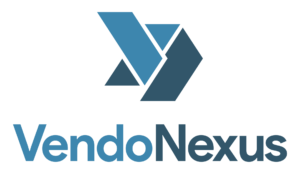As digital advertising evolves, machine learning (ML) has become a game-changer, helping brands optimize campaigns, improve targeting, and maximize return on investment (ROI). By analyzing vast amounts of data in real time, ML enables advertisers to make smarter, data-driven decisions while reducing inefficiencies.
How Machine Learning Works in Advertising
Machine learning algorithms continuously analyse patterns in consumer behaviour, ad performance, and market trends. These insights help refine targeting, messaging, and bidding strategies to enhance ad effectiveness.
Key Applications of Machine Learning in Advertising:
-
Predictive Audience Targeting
- ML predicts which users are most likely to convert based on historical data and behavioural patterns.
- Example: A fashion brand’s algorithm identifies users who have engaged with similar products and targets them with personalized offers.
-
Automated Bidding & Budget Optimization
- AI-driven real-time bidding (RTB) adjusts ad spend dynamically to maximize performance.
- Ensures advertisers bid the right amount to reach the best audience without overspending.
-
Dynamic Creative Optimization (DCO)
- ML tests and selects the most engaging ad variations (images, copy, CTAs) for different audience segments.
- Example: A travel company’s ad changes based on whether a user previously searched for beach vacations or city getaways.
-
Fraud Detection & Prevention
- Machine learning identifies and blocks fraudulent activities, such as bot traffic and click fraud, saving advertisers from wasted spend.
-
Sentiment Analysis & Social Listening
- AI analyses social media conversations, reviews, and customer feedback to gauge brand sentiment and optimize messaging.
- Helps brands respond to trends in real time.
-
Attribution Modelling & Performance Analysis
- ML helps determine which touchpoints contributed most to a conversion, improving campaign measurement and ad spend allocation.
Why Machine Learning Matters in Advertising
1. Higher Efficiency & Automation
- Reduces manual work by automating campaign optimizations in real time.
- Marketers can focus on strategy while AI handles the data crunching.
2. More Precise Audience Targeting
- ML refines audience segmentation, ensuring ads are shown to users with high conversion potential.
3. Cost Savings & Increased ROI
- Prevents wasted spend by focusing budget on high-performing audiences and placements.
- AI-driven bidding ensures better cost-per-acquisition (CPA) rates.
4. Personalization at Scale
- Dynamic creative and predictive targeting allow brands to deliver the right message to the right user at the right time.
5. Fraud Reduction & Brand Safety
- Protects ad budgets from being wasted on fake impressions and click farms.
Challenges and Considerations
-
Data Privacy Regulations
- With restrictions on third-party data, advertisers must rely more on first-party and anonymized data for ML training.
-
Algorithm Bias & Transparency
- AI models need regular monitoring to ensure fairness and avoid unintended biases in targeting.
-
Complex Implementation
- Brands need the right infrastructure, expertise, and data quality to fully leverage machine learning capabilities.
The Future of Machine Learning in Advertising
- AI-Powered Chatbots & Voice Search Advertising: ML will play a bigger role in conversational marketing and voice-driven search ads.
- Enhanced Cookie-less Targeting: AI will refine contextual and behavioural targeting without needing personal data.
- Hyper-Personalization: Future AI models will predict user needs with even greater accuracy, delivering personalized ads seamlessly.
Machine learning is transforming advertising from guesswork to highly efficient, automated, and intelligent campaign execution. The brands that embrace AI-driven strategies now will lead the future of digital marketing.
👉 Want to harness the power of AI in your advertising? Contact Vendo Nexus today to get started!

